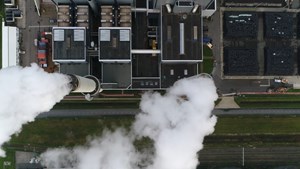Carbon capture industry to depend on oil and gas workers as new Louisiana facilities approach operations
(Bloomberg) – The Biden administration’s hub to clean carbon from the air in northwest Louisiana is getting company. On Monday, Heirloom Carbon announced that it’s constructing a facility with machines that can remove 17,000 tons of carbon dioxide from the atmosphere annually.
The startup counts JPMorgan Chase & Co., Autodesk Inc. and Klarna Bank AB among its customers. The tons of carbon captured by the new facility — slated to go online in 2026 — have already been purchased and will go to, among others, Microsoft Corp. and a buyer group known as Frontier.
The plant will be built near Shreveport, Louisiana, where Heirloom is also working on an even larger plant as part of the administration’s so-called Direct Air Capture (DAC) Hub. The company is working with carbon removal company Climeworks AG and research nonprofit Battelle to build out the hub with plans to capture 1 million tons of CO2 by the end of the decade, all backed by funding from the U.S. Department of Energy.
The newly announced Heirloom facility isn’t affiliated with the center nor backed by the federal government, though the company is banking on the region’s many oil workers contributing to its buildout and operation thanks to their transferable skills with machinery and the wells needed to store carbon safely underground.
The humid climate is also a boon for Heirloom’s technology, which relies on heating limestone to remove CO2, according to Alexa Dennett, Heirloom’s head of marketing and communications. The smaller-scale plant will allow the company to test the kilns it uses as part of its system, Dennett added.
DAC is one of a growing number of techniques to remove carbon from the air. Others include burning waste biomass in the absence of oxygen, scattering special crushed rocks on fields and the seashore, and using machines to create chemical reactions in seawater.
The plethora of options reflects the fact that the industry is still in its infancy. Heirloom, for example, opened the biggest plant in the US.. in November, yet its capacity is 1,000 tons of CO2 removal annually.
“The things we learn from that initial deployment will inform” the development of future plants, Dennett said.
The world will likely need to remove billions of tons of CO2 by mid-century, reflecting the need for a major scale-up and for costs to come down from the high hundreds of dollars per ton to something closer to $100 if possible. Dennett said that price point is Heirloom’s “north star” and the company is constantly looking for ways to cut costs, though it wouldn’t disclose the price to build the new plant or cost per ton of carbon removed.
That target could prove challenging to meet. Climeworks — which uses different technology than Heirloom — announced earlier this month that it had achieved a material breakthrough that would bring the cost of its DAC technique down to between $250 and $350 per ton in 2030. Its current costs, though, are “closer to $1,000 than $100,” co-founder and co-Chief Executive Officer Jan Wurzbacher said in a recent interview.



